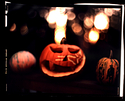All one has to do is visit Fuji's website, or take a sneak peak at an actual dealer's price list, to realize that "Crystal Archive" is a suite of products, just like I said, and not one paper.
Fuji began using the tm "Crystal Archive" sometime in the late nineties to designate their, at that time, newly developed, longer lasting emulsions. To be clear, all the current fuji silver halide papers carry the CA trademark. CAII, their only paper currently being packaged in cut sheets is the same paper as their commercial minilab paper. AGAIN, JUST IN CASE YOU DIDN'T HEAR ME THE PAST TWO TIMES - CAII IS THE ONLY FUJI PAPER AVAILABLE IN CUT SHEETS. CAII, as I said before, is not available in any sizes larger than a 12" roll or a 20x24" sheet.
Their professional papers (and trans and metallic materials), none of which are available in cut sheet form, all carry the further designations of "super" and "professional". None of these papers were ever intended for use under an enlarger. This doesn't mean that they won't work, only that they produce poor results compared to the former, optically optimized papers that they replaced. Can you contrast and color mask them for better control under an enlarger? Of course you can. You can also use high fidelity analogue mikes and tube amps and record directly to mp3 if you're so inclined. But the majority of people who know better would think you a fool. The kinder among them would consider you clever, but a fool nonetheless.
Here's a link to type ii
http://www.fujifilmusa.com/products..._papers_printing_materials/type_II/index.html
Notice their other offering on the right hand margin.
CA super type pdn is the same as super type p except with back print. CA super type CN (the rightful descendent of the old "CA Super C") is nowhere near the same as CAII, the paper currently available in cut sheets.
All the professional papers, unlike the CAII, exhibit the dmax you'd expect from a professional line, whether exposed by an enlarger or by laser light. The CAII, on the other hand, besides having the cross-over typical of a digital paper being used in an tungsten/halogen traditional drkrm., has the worst dmax of any of the papers currently available. This is not at all surprising as CAII is fuji's budget paper, primarily intended for laser exposures in frontier machines like the one at the local walmart and with prints that small, you can get away with horrible dmax (read less silver).
I think it's safe to assume that Fuji's cut sheet packaging of CAII makes up less than 1% of the total sales of this particular emulsion in the CA line.
Does anyone here really think Fuji is worrying about the extreme minority of their clients who are still using enlargers to make their exposures?





